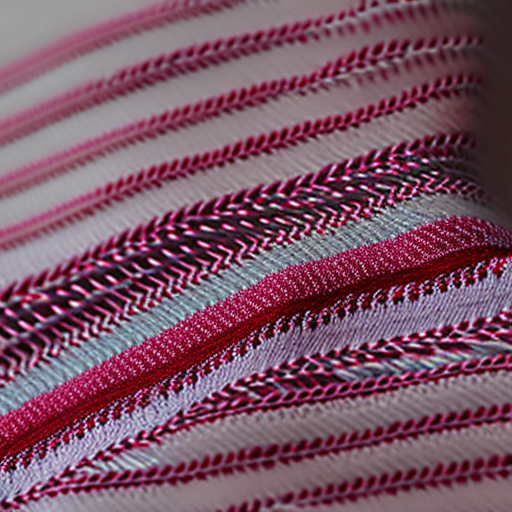Sewing stitches are the foundation of any successful sewing project. They not only hold the fabric pieces together but also contribute to the overall durability and aesthetic appeal of the finished product. Different stitches serve various purposes, allowing tailors, seamstresses, and DIY enthusiasts to create unique pieces with distinct characteristics.

Straight Stitch
The straight stitch is the most basic sewing stitch. It consists of a single, straight line of stitches and is commonly used for regular sewing, basting, and reinforcement purposes. This stitch is versatile and can be used on various types of fabrics.
Zigzag Stitch
The zigzag stitch, as the name suggests, creates a series of zigzag stitches. This stitch is excellent for finishing raw edges, preventing fraying, and adding elasticity to stretchable fabrics. It is commonly used for sewing knits, stretchy garments, and creating buttonholes.
Backstitch
The backstitch creates a strong and secure seam by sewing forward and then sewing backward. It is perfect for reinforcing seams that endure stress or need extra strength, such as on areas that face constant pulling.
Overlock Stitch
The overlock stitch, also known as a serged stitch, is found on serger machines. It sews, trims, and finishes the fabric edge simultaneously, providing a professional and clean finish. This stitch is commonly used in garment manufacturing to prevent fabric fraying and unraveling.
Blind Hem Stitch
The blind hem stitch is primarily used for creating invisible hems on garments. It involves catching only a small portion of the fabric with each stitch on the visible side, while the majority of the stitches hide within the garment layers. This technique creates a clean finish with minimal visibility.

Conclusion
Understanding the various sewing stitches and their differences allows you to select the appropriate stitch for each sewing project. Whether you are sewing a simple patchwork quilt, altering a garment, or creating a tailored masterpiece, choosing the right stitch will enhance both the functionality and visual appeal of your work.
So, next time you sit down at your sewing machine, experiment with different stitches to unleash your creativity and take your sewing skills to the next level!




